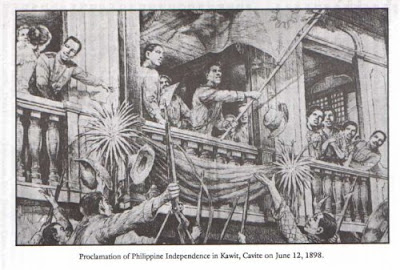
On June 12, 1898 General Emilio Aguinaldo who later on becomes the first Philippine and youngest president declared and proclaims the sovereignty and independence of the Philippine from Spain. The declaration however fail short to be recognized by other countries nonetheless it prompted for self-rule in the country and thus pave the way for the First Republic to be born. With the First Republic, Philippine Government with a Congress was established, Philippine Flag was officially declared, and the first Philippine Constitution was crafted and written, also the first constitution in Asia
The Independence was short-lived when the Philippine-American War started until the fall of First Philippine Republic to the American occupation, which effectively dissolved the First Republic. This war is of larger proportion than the Spanish-American War which resulted in more American casualties as a result of Philippine struggle for Independence and Patriotic stance. The Philippine First Republic military under the command of President Emilio Aguinaldo was of no match to the vast machinery of the U.S. military might. Nonetheless the Filipinos fought valiantly and bravely in their desire to bring Independence to their homeland.
The U.S. colonization of the Philippines, thus, denied the Filipinos the opportunity for self-rule and self-determination, and violates their own concept of Declaration of Independence, as evidence on the first sentence of the second paragraph that says:
We hold these truths to be self-evident, that all men are created equal, that they are endowed by their Creator with certain unalienable Rights, that among these are Life, Liberty and the pursuit of Happiness.
Upon the end of the Philippine-American war, the U.S. formally abolished the First Republic and imposed its rule to the Philippines. English was made the official language, public works was introduced, and sedition acts and politicalimprisonment did silenced critics. The U.S. allowed the Filipinos partial self-rule in the form commonwealth type of government until the Philippines was granted full independence on July 4, 1946 a year after the Second World War formally ended.
Upon the end of the Philippine-American war, the U.S. formally abolished the First Republic and imposed its rule to the Philippines. English was made the official language, public works was introduced, and sedition acts and political imprisonment did silenced critics. The U.S. allowed the Filipinos partial self-rule in the form commonwealth type of government until the Philippines was granted full independence on July 4, 1946 a year after the Second World War formally ended.
From then on July 4 of every year was the officially recognized Independence Day in the Philippine Calendars until President Diosdado Macapagal signed the Republic Act No. 4166 statutorily prescribing June 12 as Philippine Independence Day, effectively moving back the official Independence Day to the First Independence declared on June 12, the correct and rightful date that President Emilio Aguinaldo declared the country's independence. President Diosdado Macapagal has rendered the Philippines of great service by having put the right historical facts on track and by bringing the glory and pride back for the Philippine Republic.
June 12, was the date that the Filipinos announced to the whole world that this country is a free and independent nation. This is the date not just an observance or celebration but a day that this nation is born into freedom, asserts its natural rights to liberty, and is ready to defend again with life and honor when necessary.
From then on July 4 of every year was the officially recognized Independence Day in the Philippine Calendars until President Diosdado Macapagal signed the Republic Act No. 4166 statutorily prescribing June 12 as Philippine Independence Day, effectively moving back the official Independence Day to the First Independence declared on June 12, the correct and rightful date that President Emilio Aguinaldo declared the country's independence. President Diosdado Macapagal has rendered the Philippines of great service by having put the right historical facts on track and by bringing the glory and pride back for the Philippine Republic.
June 12, was the date that the Filipinos announced to the whole world that this country is a free and independent nation. This is the date not just an observance or celebration but a day that this nation is born into freedom, asserts its natural rights to liberty, and is ready to defend again with life and honor when necessary.